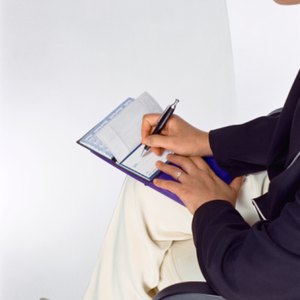
Whenever you open an American, Canadian or British bank account, you may be asked if you would like cheques in addition to your ATM debit card. Although they are not used as often as they used to be, using a reading a cheque can be very useful. A cheque can tell you all you need to know about a particular transaction and once processed, can serve as a receipt or proof of payment.
Look at the cheque, starting in the upper left-hand corner. The name of the account holder should be in this corner. It should have the name, address, city and state, zip code and phone number of the person or company who owns the account.
Look in the opposite corner. The bold number printed there should be the cheque number. This is the number the account holder will record in their checkbook to keep track of the transaction. This is also often recorded by the receiver to keep track of the payment.
Read the next line. This should be on the right side; it states the date. The next line will include the receiver and a dollar sign with a small box in which to write the amount using numerals, representing dollars and cents.
Examine the next line. This should include the amount of the check written out, so that the check cannot be altered. If the amount of the check was $56.13, then this line would read Fifty Six Dollars and 13/100. The fraction always represents the number of cents out of a dollar.
Check the bottom left-hand corner for more information on what the cheque was written for. This is often listed as "for" or "memo". The next line over will be for the account holder's signature.
Examine the numerals that run on the bottom of a cheque. These strange-looking digital numbers are known as MIRC, or the Magnetic Ink Character Recognition numbers. They can be recognized by a magnetic scanner and help identify the check as an authentic item. The first figure is called the "routing number" and tells the bank which branch to charge with the debit.
Read the second number. This number is the account number. It is followed by a space and then the number of the check. The first two numbers are separated by strange-looking characters that resemble emoticons. These are transit symbols that tell the scanner that the numbers have ended.

